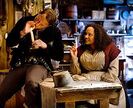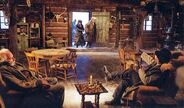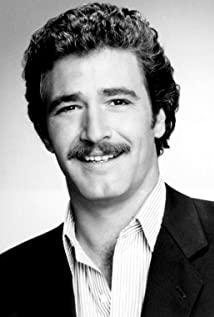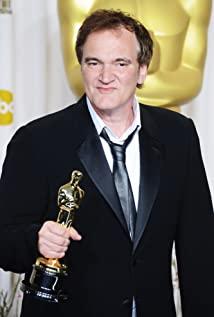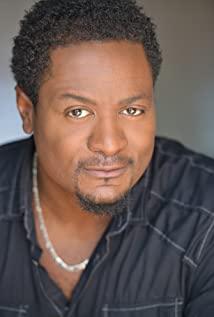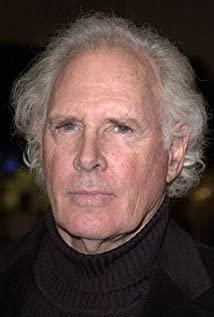As for the film "The Hateful Eight", I guess Quentin's original idea was: the eighth movie, let's shoot eight bastards in a room for one night, haha, it must be an interesting story. This thought is terrible, and the thoughts can't be restrained. These eight bastards must distrust each other, so how can they be willing to live in the same room? Hmm~ A more terrible blizzard is raging outside the house, and they are trapped. Well~ a small shop in the ice and snow of Wyoming, this would be the perfect place for the story to happen. I don't know if "The Dragon Inn" gave Quentin such an idea, but in any case, the scene of the story was born.
So, what does the story look like? Bounty hunter John Ruth took his prey Daisy Domergue to receive the reward, while hangman Oswaldo Mobray, cowboy Joe Gage, Mexican Bob, and hidden figure Jody set up a game to rescue Daisy. Three other characters accidentally broke into this story. The bounty hunter Marquis Warren that John Ruth ran into on the road, the new sheriff Chris Mannix, and the old general Sanford Smithers left behind by the ambushers, the three of them are in the north and south. In the context of the war, they had their own independent relationship: one was a black major from the Northern Army, one was a traitor from the Southern Army, and the other was an old general from the Southern Army. These three were squeezed into a room and had an immediate effect. The ground brings a tense atmosphere and exaggerated dramatic effect. However, the branch relationship in the context of this war does not provide many stories, but provides a lot of narrative dialogue. In these Quentinian narratives, the background, personality, and inner activities of each character are gradually in the minds of the audience. Be clear.
Quentin is a master of storytelling, but to be honest this time it is really out of standard, of course, based on his previous standard. As Quentin’s tried and tested trick, the story is turned into six scenes by chapters. In fact, there are only two scenes. The first two chapters are in the carriage, the last four chapters are in the shop, and the fifth chapter is in the form of interspersed narration. The ins and outs of the four ambushers are introduced. It is a pity that the narrative rhythm of the story is not very good. The actual climax of the whole film appears in Chapter 3 and Chapter 4. This makes the latter two chapters a bit tedious. The three strongest climax points are "Major Marquis" "Fight against the old general", "John Ruth died suddenly", and "Major Marquis investigates the murderer", but only the first point is very brilliant. Samuel L. Jackson's superb performance makes people seem to see Jules in "Pulp Fiction" again, but The fact that John Ruth was poisoned was spoiled by Quentin himself, and the audience were all accompanying Daisy waiting for him to vomit blood and die. It feels like a drama, and the drama is greatly reduced. There should be a more clever way to deal with it. Major Marquis, who was the poisonous murderer, has become Holmes. His thoughts and guesses were extremely accurate, and his dialogue was used in a literary but boring feeling like a essay. In the end, he was sure that the reason for Bob’s problem was actually because Bob is a Mexican, he knew it before he even entered the house, which made the logic a little strange. The sudden appearance of the hidden character Jody is a great highlight. There is no foreshadowing. Just as the audience thought that the wise and composed Major Marquis was in control of everything, there was a sudden reversal, but after the narration in Chapter 6, It was discovered that the situation had not changed much. Jody was exploded before he could crawl out completely. So the next story was like garbage time on the court. Although he tried his best to create the last suspense, it was already lacklustre, and even finally let Chris. Mannix fainted suddenly, alas, almost laughed out... Besides, Quentin actually used his own narration to transition the plot, which was really a failure.
Although there are some lacks in the storytelling, the character description in this film is really meticulous. Every action, eyes, and expression of the characters are very particular, especially some small actions. From the viewer's perspective, it feels like details accidentally captured by the lens. , But directly imprinted the character's personality into the audience's mind. There are too many examples of this in the film. Take the most amazing Daisy Domergue in the film as an example. As the only "wicked woman", Daisy is full of elusive charm. She looks vulgar, baring her teeth, licking blood, blowing her nose, spitting, and carrying With a hoarse voice like a witch, she was constantly beaten but couldn't help but laughed at John Ruth again and again. The way she stuck her tongue out to catch snowflakes was pure and beautiful, and she was so cute that she was shy or self-deprecating from time to time. The guitar playing and singing of the Australian folk song Jim Jones at Botany Bay made the fierce John Ruth gradually fascinated, and after the fierce appearance, her face was bloodied and like a demon in hell, Jennifer Jason Leigh showed superb acting skills.
In addition, Quentin is a man with a great sense of humor, and his stories are never lacking in unstoppable passages. The most typical one in this film is the broken door that needs to be nailed to two boards. When Major Marquis came in, he asked Bob. Which idiot broke the door, Bob was so flustered for a while, we know in the interlude of Chapter 5, haha, it was this idiot who broke the door.
From the perspective of lens language, the film creates a rich perspective and composition in a small space, which is really amazing. Especially commendable is the coordination between the distant and the close. The characters in the distant view in each lens are not rigid. Yes, even a vague shadow is action and storytelling. For example, after Daisy was pouring vegetable soup on his face by John Ruth, Joe Gage in the distant view immediately got up, and then pretended to be nonchalant and walked over to serve the bowl. Stew, I also served a bowl for OB. For example, when Daisy was singing, John Ruth, who had been in the distant scene, waited for OB to come back and pour poisoned coffee together. The focus has been switched between far and near with Daisy's sight. After the song is finished, someone is dead.
I have to mention that although Quentin has always been generous with plasma, the bloody scenes in this film are indeed a bit too far. The overly real headshot scenes are still quite nauseous, and Daisy is simply taking a plasma bath. But most of the bloody shots don't actually have enough emotional contrast, just the sensory stimulation is not very interesting.
Finally, let’s talk about the letter from Lincoln. It is like Hitchcock’s MacGuffin. It created suspense from the beginning, but it was actually fake. The letter didn’t reveal its true content until the end of the film. In this cold movie, this letter is the only warmth. These villains kill people like cutting vegetables, but this letter touches the softest part of their hearts. Listening to Chris Mannix reading this letter in a deep voice, it was indeed touching.
Ole Mary Todd's calling, it seems that I should go to sleep, so let's stop here.
View more about The Hateful Eight reviews





